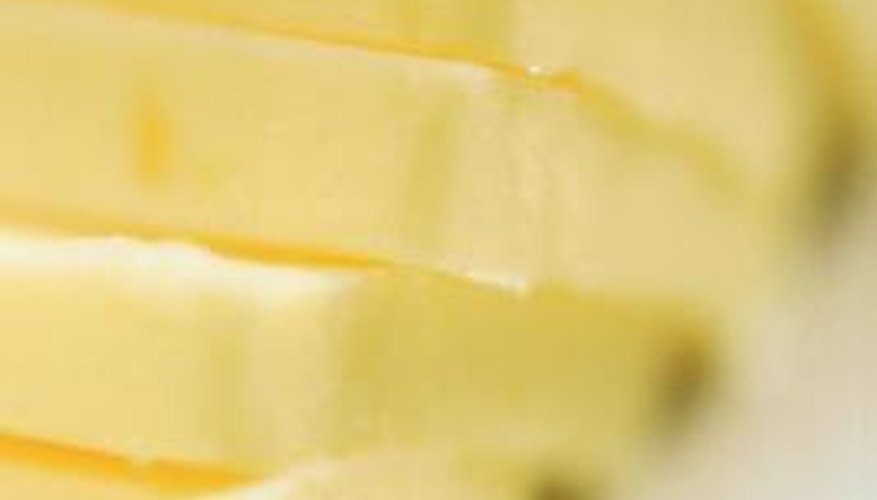Butter, real butter, whether melting on pancakes, mixed with herbs dribbling down a steak or just melted and ready for lobster or artichoke dipping -- butter is better. Besides bathing broccoli or caressing carrots, butter is often a critical ingredient in sauces. Think twice about substitutions for butter when making a white sauce, bechamel or hollandaise sauce.
Flavour
Try as they might, butter replacement products just can't duplicate the taste of real butter. It's fresh, tangy and, well, buttery. Use unsalted butter in sauces and add salt and pepper to taste. One of the basic butter sauces is melting butter until it is golden brown and adding sliced scallions, freshly ground pepper and parsley or thyme. Browning the butter gives it a nutty flavour. This sauce is called browned butter sauce.
- Try as they might, butter replacement products just can't duplicate the taste of real butter.
- Browning the butter gives it a nutty flavour.
Thicken
Cold butter whisked into hot liquids thickens them to sauce consistency while adding a rich butter flavour as well. Make a very simple sauce by adding a cup of white wine into the pan after you've removed the cooked meat or chicken. Boil until the wine is reduced by half. Remove from the heat. Add 1 tbsp of freshly squeezed lemon juice. Whisk in 4 tbsp of butter, 1 tbsp at a time. Serve immediately.
- Cold butter whisked into hot liquids thickens them to sauce consistency while adding a rich butter flavour as well.
- Make a very simple sauce by adding a cup of white wine into the pan after you've removed the cooked meat or chicken.
Binding
Sauces such as hollandaise and Béarnaise depend on an egg yolk absorbing the fats in butter to bind the resulting sauce. If you add too much butter, the sauce curdles or breaks. If you don't add enough, the result is too thin. These sauces are not attempted by novices for this reason. Follow the directions exactly and your sauce will succeed. Other sauces, such a bechamel, depend on the butter absorbing the flour before the cream is added. Bechamel starts with a roux. Melt the butter and whisk in an equal amount of flour. Cook for two minutes, stirring constantly to get rid of the raw flour taste. Add the cream slowly.
- Sauces such as hollandaise and Béarnaise depend on an egg yolk absorbing the fats in butter to bind the resulting sauce.
- Other sauces, such a bechamel, depend on the butter absorbing the flour before the cream is added.
Tips
Butter goes from brown to burnt in two seconds flat, maybe less. Burnt butter isn't good for anything. Dump it, wipe out the pan with a paper towel and start again. Melt butter on medium heat and watch constantly. When making a flour-based sauce, use the same amount of butter as flour. For sauces that depend on butter for thickening, use ice cold butter. Take it out of the refrigerator right before using. One of the quickest sauces to make is a compound butter. Bring butter to room temperature so it's soft. Combine equal amounts of butter and chopped herbs. Roll up into cylinder and put in the refrigerator. When you need a butter sauce, slice off an inch of the now compound butter and place over hot foods. As it melts, you have a sauce.
- Butter goes from brown to burnt in two seconds flat, maybe less.
- For sauces that depend on butter for thickening, use ice cold butter.
